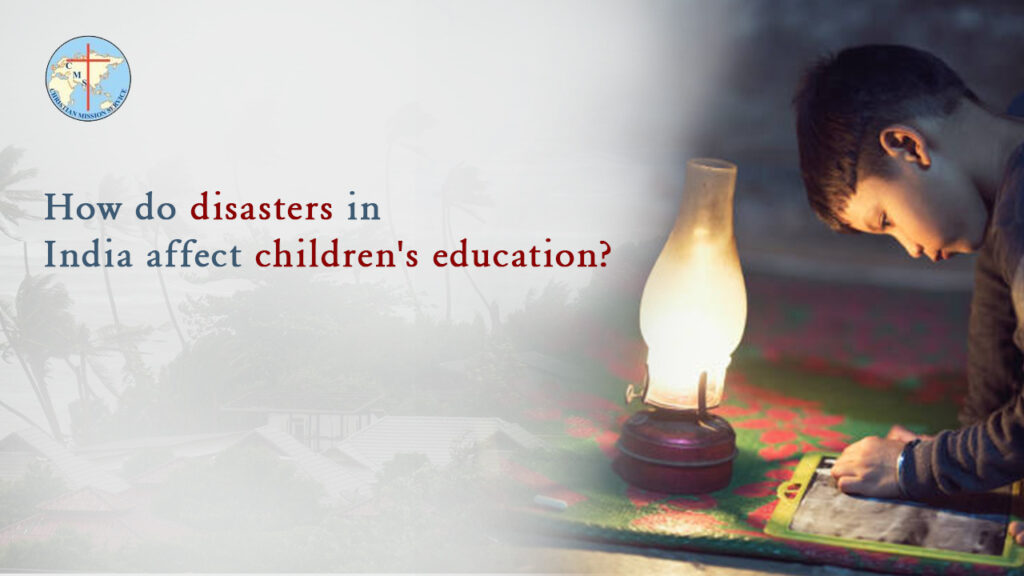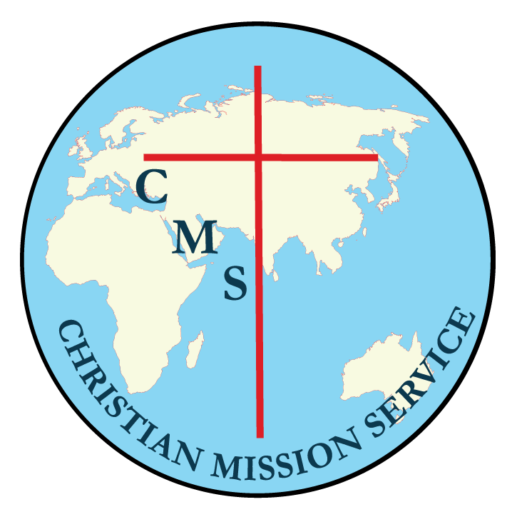- 0423-2230317
- info@cmsi.org.in
- +91 94427 80890
- +91-423-2230751
- CMS Central Office, Silverdale, Coonoor - 643101, The Nilgiris, Tamilnadu, India

- 0423-2230318
- info@cmsi.org.in
- CMS Central Office, Silverdale, Coonoor - 643101, The Nilgiris, Tamilnadu, India
Impact of Disasters on Indian Children

What is a disaster?
According to the UNDRR (United Nations Office for Disaster Risk Reduction), disasters are defined as a serious disruption of the functioning of a community or a society causing widespread human, material, economic or environmental losses which exceed the ability of the affected community or society to cope using its resources. To put it in simple words, disasters are forces that cause excessive damage to the lifestyle of a group of people. Disasters set up an enormous challenge for the people and the country to regain from the economic, social, and human losses. Disasters have been said to have damaged the human condition throughout the history of humans. Disasters happen across the world. Disasters can be natural and human-made. Human and economic losses from the disasters in India are high when compared with other developing countries. Due to climate change, disasters tend to increase in number across the world. Humans have exploited the world to a great extent that the geological, geographic, and climatic conditions of the earth are rapidly changing. This leads to a vast number of disasters across the world. As India is near the coastal belt, natural disasters like floods, cyclones, and drought occur repeatedly in different parts of the country. The districts across India face different disasters around the calendar year and are prone to multiple hazards. Earthquakes, hailstorm avalanches, landslides, and other human-made disasters such as mercury soil pollution in Kodaikanal by Unilever happen in a country like India. The magnitude of the disaster and the vulnerability of the demography determines the impact of disaster occurrences. The disasters affect the poor and vulnerable communities, especially children who suffer the most and are unable to protect themselves.
Disaster Risk Reduction and Management – A point of View
Are disaster risk reduction and management necessary? People have taken efforts to reduce the risk of disasters and to monument disaster management throughout the times of history. But, after the industrial revolution, the importance of capital got increased and the mentality of saving humanity got enormously reduced. The power of capital has made us delve toward capital development and not care about the lives of people. India has taken important measures since 1951 to take care of disaster management procedures. But climate change has become the problem of the twenty-first century. An article in ‘India Climate Dialogue’ (2017) states that in 2016, the country reported the highest number of deaths due to extreme weather and suffered losses of more than Rs. 1.4 trillion in property damage, 2114 human fatalities, and various other damages. This is one percent of India’s GDP. The Hyogo Framework of Action approved in 2005 by UNISDR to which India is a signatory, warrants mainstream priority of disaster risk reduction into socio-economic development planning and activities. The Government of India has constituted a High-Powered Committee on Disaster Management. The Disaster Management Act was passed in the year 2005. This act lays down institutional, legal, financial, and coordination mechanisms at the central, state, district, and local levels.
The necessity for Disaster Resilient Safe Schools
Schools serve a significant purpose in the life of a child. It shapes the future of a child. Children spend a vast amount of time in school which generally serves as their second home. School education plays a vital role in the mental and psychological development of a child. A beautiful school infrastructure makes school life interesting and motivates children to attend school. This improves their learning outcome. Recent disasters around India attest to the fragility of many schools. Every kid deserves equal opportunities to express their talent irrespective of their race, religion, gender, class, creed, caste, and ability. They deserve a safe environment for their studies. Sometimes, it takes a longer time to recover from a disaster both physically and mentally. What do the affected kids do to sustain their education, livelihood, and food? Various NGOs help people during disasters. But only a few organizations provide actual care by taking care of the needs of the children including education. Organizations like Christian Mission Service ensure the safety of the children and also provide various educational facilities to the children affected due to the disasters. When children live in hazard-prone areas they need schools that guarantee their protection. Poor quality of construction, unavailability of disaster-resilient features, and poor maintenance might lead to damage to both the infrastructure of the school and the minds of the children. The NDPM (National Policy on Disaster Management, 2009) provides a need for safety in schools. The policy speaks about both structural and non-structural safety methods for schools. The policy came into existence to design school buildings that are disaster-resilient and equip the buildings with sufficient safety measures. According to the School Safety Policy Guidelines -2016 of the Indian Government, the School safety Focal point teacher should be nominated to take care of the safety actions at school at an operational level. The school management committee should be trained in safety and disaster contingency methods.
School infrastructure makes school a safe place for children. Non-governmental organizations provide post-disaster reconstruction methods to make education get resume in various places across India. Christian Mission Service (CMS) makes sure that every child is given the right to live and get an education. CMS takes care of the children during both non-hazard and hazardous times. They ensure safety, food, clothes, shelter, and education to vulnerable kids who suffer from various social and psychological mishaps.

